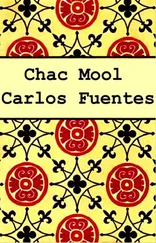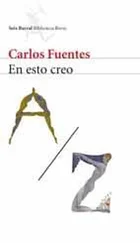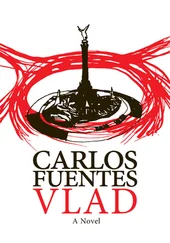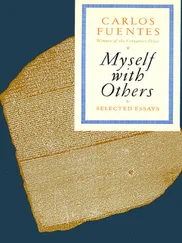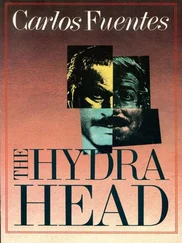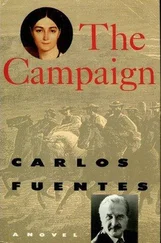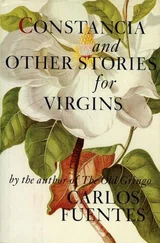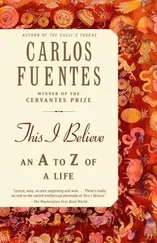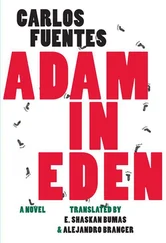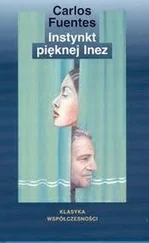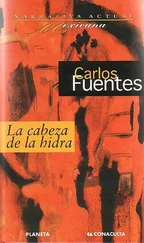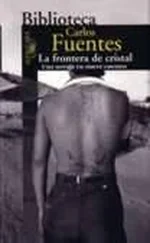Carlos Fuentes - Christopher Unborn
Здесь есть возможность читать онлайн «Carlos Fuentes - Christopher Unborn» весь текст электронной книги совершенно бесплатно (целиком полную версию без сокращений). В некоторых случаях можно слушать аудио, скачать через торрент в формате fb2 и присутствует краткое содержание. Год выпуска: 2013, Издательство: Farrar, Straus and Giroux, Жанр: Современная проза, на английском языке. Описание произведения, (предисловие) а так же отзывы посетителей доступны на портале библиотеки ЛибКат.
- Название:Christopher Unborn
- Автор:
- Издательство:Farrar, Straus and Giroux
- Жанр:
- Год:2013
- ISBN:нет данных
- Рейтинг книги:3 / 5. Голосов: 1
-
Избранное:Добавить в избранное
- Отзывы:
-
Ваша оценка:
- 60
- 1
- 2
- 3
- 4
- 5
Christopher Unborn: краткое содержание, описание и аннотация
Предлагаем к чтению аннотацию, описание, краткое содержание или предисловие (зависит от того, что написал сам автор книги «Christopher Unborn»). Если вы не нашли необходимую информацию о книге — напишите в комментариях, мы постараемся отыскать её.
Christopher Unborn — читать онлайн бесплатно полную книгу (весь текст) целиком
Ниже представлен текст книги, разбитый по страницам. Система сохранения места последней прочитанной страницы, позволяет с удобством читать онлайн бесплатно книгу «Christopher Unborn», без необходимости каждый раз заново искать на чём Вы остановились. Поставьте закладку, и сможете в любой момент перейти на страницу, на которой закончили чтение.
Интервал:
Закладка:
My parents were vegetating as they watched the alternative reality offered on television, when suddenly two things happened. The Last Playboy Centerfold Contest, a hard one to win because that enterprising Chicago-based magazine hadn’t yet given up the ghost, not even in the face of the puritanical reaction of the eighties (monogamy, condoms, herpes, and AIDS), not even in the face of the change of generations, not even in the face of geographical distances — statistics proved they’d photographed more than 80 percent of the cunts on the planet. No: the magazine had defied age and, some suspected, would defy death itself. But the file of dead beauties in the safes facing windy Lake Michigan, in the iron-steel axis that ran from Chicago to Philadelphia, was closed to public scrutiny, even as the photos of naked crones began to be peddled around in a very discreet fashion. Who would win? The postmortem centerfold of the divine Swede, Lola-Lola, sitting astride a gravestone, or the venerable grandma of the bobbing breasts, Doña Sara García, posing naked as a jaybird?
Neither. This hot April night, a woman barely fifty years of age, well preserved, pretty, although with thick Andalusian ankles and without a jolly Cuban ass, square in the waist and with a cinched-in bosom, her hair tightly curled, red — a grownup version of Little Orphan Annie — a plunging neckline that went nowhere and revealed nothing, forcing the viewer (in this case, my parents and my uncle) to concentrate on the strange glimmer of her teeth, inlaid, overlaid, and plated with silver and gold even if they may have been rotten, turns out to claim the title of Last Playboy Centerfold.
“Clown of a whore,” she said. “It’s not that I haven’t had anything to eat, but there’s going to be some hair pulling if my rights are not recognized, you bunch of stinking ragpickers. I won’t move from here, even if the cops come to cart us off to jail. Shit! Long live Chile!”
“Concha Toro!” exclaimed my father. “The woman who took my virginity! The Chilean bolero singer!”
But the picture, which really did not seem posed, quickly disappeared, and in another television studio someone was handing the prize for the Last Flower Child to none other than Hipi Toltec, while the announcer explained that they had first intended to award the prize to the oldest hippie (there were lots, since someone who was twenty in 1962 was fifty in 1992: no matter how fragile he looks, Mick Jagger is going to reach his fiftieth birthday, and Paul McCartney can indeed ask in a trembling voice “Will you still need me / Will you still feed me / When I’m sixty-four,” which is how old Shirley Temple will be this year, along with Gabriel García Márquez and Carlos Fuentes). So, since there is really no one more out of it than someone who was a flower child in the sixties, they chose instead to give a prize to the youngest, the person who personified the prolongation and not the extinction of a nostalgic tradition
OBLIVION AND UNION:
Hipi Toltec, shredding, took the little sugar skull and said the contest organizers had made an error, he was neither a hippie nor young: he was the plumed serpent who had finally returned to demand
UNION AND OBLIVION:
The channels turned into scrambled eggs: both the video and the audio; a bolero sung by Concha Toro and a rockaztec ballad sung by the Four Fuckups got blended into the audio and mental confusion of the TV managers, but my parents turned off the set, left Don Homero sitting there with his mouth hanging open, got dressed in their own style, my father in a three-piece black suit, tie and tie pin, starched collar, patent-leather boots, spats, white gloves, stick, and bowler (models: Adolphe Menjou and Ramón López Velarde); my mother in the tragic style of the early twenties, which looked so well on her: black satin top and skirt, to which she added languid tulle veils that turned her outfit into a dark cascade from her bare knees to her covered ankles; a black satin ribbon went around her forehead, leaving her wild, frizzy hair unfettered (models: Colette and Pola Negri), and free at last from having to feign, to vegetate, to stare endlessly, they walked out (the switches that turned them on, their inspiration: Concha Toro and Hipi Toltec) into the city because the city, after all and legitimately, was calling them, waiting for them, offering them these two solid moorings in a world left adrift, because:
“Where do you think the Bulevar is these days, baby?”
7. You Live Day to Day, Miracle to Miracle, a Lottery Life
Would they find the Bulevar? They’d been out of town since December, and since March they’d been locked in with Uncle Homero in Tlalpan; the Bulevar changed location every week, sometimes every twenty-four hours; it was never the same twice, but it was always everything: the place to meet in the capital, the place to see and be seen, the Plateros, the Madero, the Paseo de las Cadenas, the Zona Rosa of yesteryear, but now with this scandalously wonderful singularity: where that meeting place was no one knew, as secret as language (the new languages) it mutated every day, every hour, in order to remain ungraspable, uncorrupted by writers, orators, politicians, or any other manipulators.
The dripping sky is one of the constants in Mexico City; it rains incessantly, a black, oily, carboniferous rain that darkens the grandest neon signs; the sensation of a veiled dark sky in whose fogs fade the skeletons of the buildings, many of them unfinished, many just rusted steel beams, truncated towers, the temples of underdevelopment, skyscrapirontemples, others mere canvas, like those at the entrance to Puebla, others just cubes of cardboard dripping acid rain, but very few real, inhabited structures: the city lives by moving, permanence has become secret, only movement is visible, the stands along the old Paseo de la Reforma, fried foods, fruit stands, wilted flowers, black candy, sweetmeats, burro heads, pigs’ feet, maguey worms (perpetual humidity of the city, immense breeding ground for mildew, moss, rotten roe, peevish ants ready to be eaten), and the files of figures bent over devouring the tacos sold along Reforma in front of the tents illuminated by naked bulbs and burning mosquito repellant. But these details can only be seen with a microscope because from above (the view our happy foursome had as they entered the D.F.) the city is an immense, ulcerated crater, a cavity in the universe, the dandruff of the world, the chancre of the Americas, the hemorrhoid of the Tropic of Cancer.
Since the earthquake of ’85, tens of thousands of the homeless have taken over the traffic-circle islands and medians along Reforma and other main, divided arteries: shacks and pup tents, little shops and stalls: with each passing day the capital of Mexico looks more and more like a hick town. The somber but comic outfits Angel and Angeles are wearing, very twenties, as they drive the Van Gogh along Paseo de la Reforma, are an answer, a conscious and collective answer made by all young people with some spirit left, to the ugliness, the crudeness, and the violence around them.
The neon sign on the pockmarked façade of the theater in the Social Security Building blinked AFTER THE FIESTA THE SIESTA, and Angel and Angeles followed a horse-drawn coach shaped like a seashell. Who could be in there, behind those drawn curtains? Angel and Angeles exchanged glances: what they were thinking was probably what everyone who saw that coach right out of Cinderella’s nightmares thought: wherever that pumpkin on wheels is going is where the party, the Bulevar, the place, the sacred oasis of crime and cathartic violence is, for sure. The crowds grew larger as they went along Constituyentes, but it still wasn’t the Bulevar, they instinctively knew it. The packed, pallid throng tossed mango skins into the faces of those they didn’t like. Many young men walked quickly, without looking at anyone, all of them with bags hanging over their backs. From her window, an old lady was throwing flowerpots full of dirt and geraniums down onto the street, indiscriminately smashing the skulls of the passersby. No one even bothered to look up at her; no one looked down at them. They all wear identification labels on their chests (blouses, lapels, sweaters): name, occupation, and existence number for D.F. It rains ash. The ID cards neither fade nor come loose. The slow collapse of all hydraulic systems — Lerma, Mexcala, Usumacinta — have been compensated for by the constant acid misting caused by the industrialization of this high, burning, and enclosed valley.
Читать дальшеИнтервал:
Закладка:
Похожие книги на «Christopher Unborn»
Представляем Вашему вниманию похожие книги на «Christopher Unborn» списком для выбора. Мы отобрали схожую по названию и смыслу литературу в надежде предоставить читателям больше вариантов отыскать новые, интересные, ещё непрочитанные произведения.
Обсуждение, отзывы о книге «Christopher Unborn» и просто собственные мнения читателей. Оставьте ваши комментарии, напишите, что Вы думаете о произведении, его смысле или главных героях. Укажите что конкретно понравилось, а что нет, и почему Вы так считаете.

